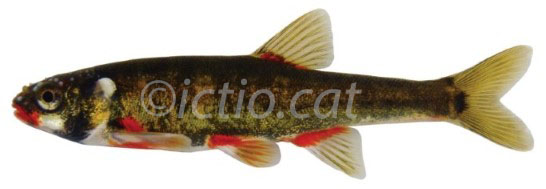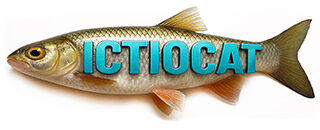Veró de Llenguadoc
Phoxinus septimaniae

És de petita mida amb una longitud màxima d’uns 10 cm. El cap és relativament gran i la boca terminal, on destaca la mandíbula inferior lleugerament més curta que la superior. El dors és de color marró o daurat, amb taques fosques als flancs que formen un patró de franges verticals. Hi ha dimorfisme sexual en la coloració. Els mascles tenen la base de les aletes i els llavis de color vermell, i el cos pren coloracions verdoses.
Es distribueix naturalment pels rius de Catalunya del Nord i sud-est de França. Ha estat àmpliament introduït a Catalunya a les conques del Segre, Muga, Fluvià, Ter i Tordera.
Viu en rius de muntanya d’aigües corrents i fredes, amb substrats de pedres i graves. També pot viure en els estanys d’alta muntanya. És una espècie gregària que forma moles molt denses a les vores dels rius i llacs. Es nodreix d’invertebrats i algues.
El veró és una espècie invasora que causa greus impactes sobre les espècies autòctones en entrar en competència per l’espai i l’aliment. En alguns estanys pirinencs s’han dut a terme actuacions per reduir les seves poblacions amb bons resultats.
Distribució

Veró de la Garona
Phoxinus dragarum

Molt semblant d’aspecte al veró de Llenguadoc, es diferencia d’aquest per l’absència d’una banda d’escates al pit, a la zona anterior a les aletes pectorals. Aquests caràcters tenen una certa variabilitat entre els individus d’una mateixa població, per tant en molts casos cal una caracterització genètica per identificar l’espècie.
El veró de la Garona és endèmic d’aquesta conca, però la seva distribució no arriba a la Vall d’Aran. Per tant, totes les poblacions que es troben a Catalunya són introduïdes. És present a la Noguera Ribagorçana i a altres conques on hibrida amb el veró de Llenguadoc.
Les característiques biològiques són molt semblants a les del veró de Llenguadoc, i també és una espècie altament invasora i perjudicial.
Distribució

